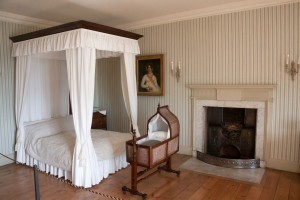Kristin Holt's Blog, page 37
June 24, 2015
Photographic Inspiration
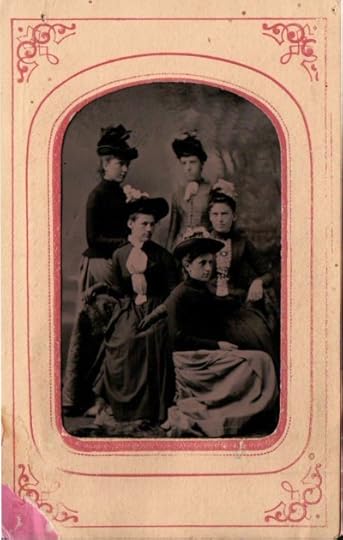
Tintype Photograph in Paper Frame Purchased from an Ebay Seller, Unidentified Subjects
Inspiration from Historic Photographs
One of my favorite sources of inspiration is antique photographs. This particular image came to me via ebay. A set of two similar tintypes of the same five women pictured here were available for sale, and I simply had to have them. Look at these five. Who were they? Sisters? Friends? Cousins? Mail Order Brides? Were they women who knew one another the whole of their lives, or is it more likely they had this portrait taken to remember their bond, prior to going their separate ways? The possibilities seem endless. The images are unlabelled without so much as a year or a photographic studio imprint. It’s impossible (for me) to know where or when or who. That’s where my imagination must take over.
The mere asking of questions such as these spark my creativity. It may be my penchant for mail order bride romances, but in these five solemn faces, I see women in the 1880’s through early 1890’s (based upon the cut of their clothing and style of hats). Living, breathing, real women who had names, parents, lives, families, fell in love.
They lived.
I can easily see these ladies as five different mail order brides. Friends who left home with a variety of reasons, parting ways, each carrying this image (or one taken moments before or after) with her to remember friends and sisters.
Every single spark of creativity I might find in studying this photograph might be 100% fiction, yet that’s the magic of any author’s creative process.
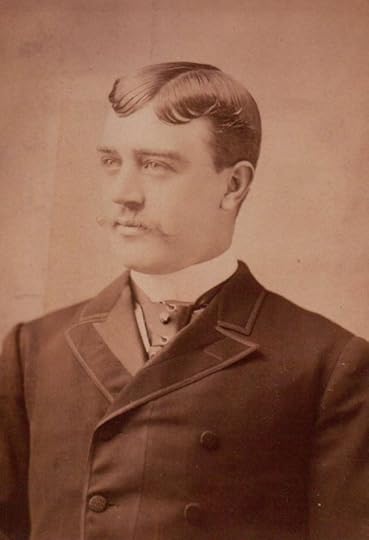
Unidentified Handsome Man, Coleman (Photography Studio), Westfield, Massachusetts, probably 1890s
Judging by the exquisite tailoring of this handsome fellow’s double-breasted suit coat, the size of his tie tack, the curl in his mustache, short hair, and the style of photography, this prize (also won in an ebay auction) sepia-toned photograph most likely hails from the late 1890s (or perhaps soon after the turn of the century). I fancy pale green eyes, light brown hair, and a smile that won ladies’ hearts. This cabinet card bears the imprint of Coleman studio in Westfield, Mass., but no date nor name. A search on image.google.com yields no matches. I have no idea who this man was, though he seems prominent, healthy, happy, wealthy, likely married, a father… so why was his image for sale on ebay?
That brings up a whole ‘nother round of questions. (The short answer, I do believe, is no one inscribed his name on the cabinet card, and posterity lost touch with who he was. The image may have been sold as part of an estate sale.)
Lots of questions. The most important, to me, are those I might ask myself as part of my writing process, story exploration, and character development:
Who is this man/woman?
What experience is behind the emotion (however subtle) on his/her features?
What is his/her economic status? Employment? Place in society?
What name is a good fit?
What does this person want most?
… and why can’t he/she have it?
What is his/her greatest fear and/or greatest challenge?
(And because I write romance…) Who is the best possible love match for him/her?
… and why will it be difficult to simply fall in love and live happily ever after? (After all, no conflict, no story.)
Every author, no matter how they create lifelike characters, does so with a a flair of creativity as unique as the individual writer. One of my most favored resources for boosting my imagination is true-to-the-era photography. I find historic images to be more than inspiring… they’re a perfect jumping off place to fuel my creativity.
For all my author friends: what role do era-specific photographs play in the creation of your fiction (or nonfiction)?
For all my reader friends: what do you enjoy most about old-time photographs?
Copyright © 2015 Kristin Holt, LC
June 22, 2015
Soap Making on the Old West Homestead
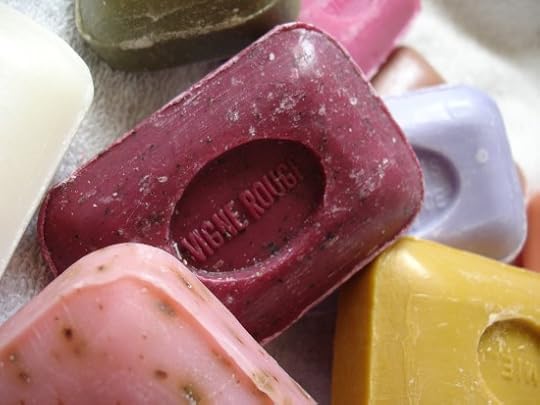
21st Century people have it easy. We buy any kind of soap we might want. It’s readily available, inexpensive (for the most part), and comes in a unlimited scents, from countless manufacturers, in liquid preparations or body-washes or bar form or powders. Better yet, it’s designed for laundry or shampoo or housecleaning or bathing. It smells good. It’s effective. Many varieties are gentle on the environment.
What did people on frontier homesteads do for soap? They made it from animal fat, wood ashes, and water. The fat had to be boiled (refined) and the wood ashes leached for a weak lye solution (to also boil into condensed state). Sounds like a whole lot of messy work.
It was so messy, so smelly, homesteaders would spend one whole day on this chore just once or twice a year, making enough soap to last the family as long as possible.
GRANDMA’S LYE SOAP
Take fat scraps and lye and boil together. Lye made by pouring water over ashes and letting it drip into a container.
To make lye, wood ashes were saved. Hardwood ashes were preferred, as many soft woods would not make good lye. Fat rinds, drippings, grease and boiled-down entrails were used in making soap. Usually, enough soap was made at one time to last a year. Bones were also used, as lime improved the quality of the soap. The bones were boiled down when the moon was full, of course. Two quarts of boiled lime were added to each barrel of ashes to neutralize certain salts, which lowered the quality of the soap. Limerock layers were often interbedded with ashes in the ash barrel or layer trough. the alkali in the ashes was dissolved with water. when the lye became deep red in color and when the liquid would float an egg or potato half above the surface of the mixture, it was ready! Boil with grease until firm. Allow to harden and break into small pieces. [Source: Rocky Mountain Receipts Remedies]
COLD SOAP
Boil lye and grease. Twelve pounds of grease were used to make a barrel of soft soap, or three pounds to a pail of strong lye. When a thick scum of grease has formed on top, the lye has absorbed its quota and more lye can be poured in. for soft soap, remove kettle when contents form a clear mass. Place in crock by family wash basin. A barrel of ashes and twelve pounds of grease would produce forty pounds of soap. Turpentine and salt were also added in minute amounts to improve quality. [Source: Rocky Mountain Receipts Remedies]
Note that these old-time recipes don’t explain much about how to come by the necessary lye, or how to render the animal fat. Both preparatory processes were time-consuming, hard work, and relied upon judicious housekeeping. Homesteaders would hang onto every bit of fat trimmed from meat and all ashes cleaned from campfires, stoves, and hearths.
MAKING LYE
Wood ashes from fires would be saved in a hopper (a contraption built to allow water filtration through stored ashes). The water leached lye from the ashes, but it was still too weak for use. The solution would be boiled, usually on an outdoor fire, slow and long until the solution strengthened enough for use in soap making.
RENDERING FAT
Grease leftover from cooking, along with uncooked animal fats from the butchering process would be saved (yuck!) until the once or twice-a-year soap-making event. This smelly job took all day (or longer) and was conducted outdoors as to not be trapped inside with the most unpleasant odors. Fats were combined with an equal quantity of water and boiled slow and long. Eventually the water and impurities would fall to the bottom, and the rendered fat (desirable end-product) would rise to the top. The pot would be removed from the fire, allowed to cool, and the separated rendered fat to harden.
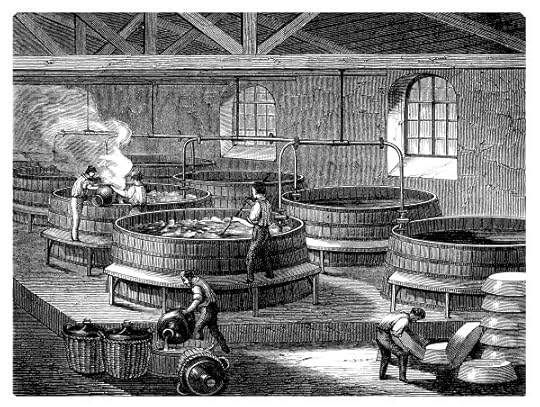
Soap Factory – Fabrication du Savon – 19th century : ca 1870
COMMERCIAL SOAP
Soap-making companies have been around (in the United states) since the very early 1800’s. The commercial soap company Peet Brothers Co., Kansas City, KS, was in business as early as 1872. Urban legend suggests Ivory Soap’s debut was little more than absentmindedness when a soap maker left his station at Proctor and Gamble for his lunch break in 1879 without turning off the machine. Extra air was whipped into the white soap, creating a “mistake” people kept asking for. This myth was debunked when archivists discovered chemist James N. Gamble’s notes regarding the process of creating this better soap formula. The company used the slogan “the soap that floats” in the early 1890’s. An 1898 marketing poster illustrates a miner, far away from the comforts of city life, washing in a pond, with the most affordable, most versatile, most pure soap floating at his side.
The presence of commercial soap didn’t necessarily reach the frontier, making it necessary for homesteaders to continue making their own throughout the Old West Era. Eventually, soap became readily available at General Stores, but many considered it downright unnecessary to spend hard-earned money on something they could create with their own two hands.
I think I would’ve been one of the first women to eagerly barter for ready-made soap at the General Store. What about you? Would you find soap-making a fulfilling, rewarding task? … or not?
6 INTERESTING FACTS ABOUT SOAP
Ancient Babylonians made and used soap.
7th Century Arab chemists made the first plant-oil soaps, perfuming and coloring their liquid and solid products.
Soap fell out of favor with the fall of the Roman Empire in the late 4th century. The Roman Catholic Church saw bathing (and soap use) as hedonistic.
In the 8th century, soap making was well-known in Italy and Spain.
Many claim making soap became ubiquitous, mid-19th century, because of two wars: the Crimean War (1854-1857) and the American Civil War (1861-1865). Florence Nightingale brought hygiene into British field hospitals in late 1854 and British deaths due to disease decreased. This lesson was not lost on Americans who instituted hygienic reforms among soldiers. Having become accustomed to regular soap use, soldiers returning from battle brought their new, clean habits home.
Lye Soap is actually not caustic to skin, clothing, wood or anything else. A chemical reaction bonds lye with fat, and creates an entirely different compound–soap.
Please share this post with anyone interested in history.
Copyright © 2015 Kristin Holt, LC
June 17, 2015
Pioneer Hearts Facebook Group
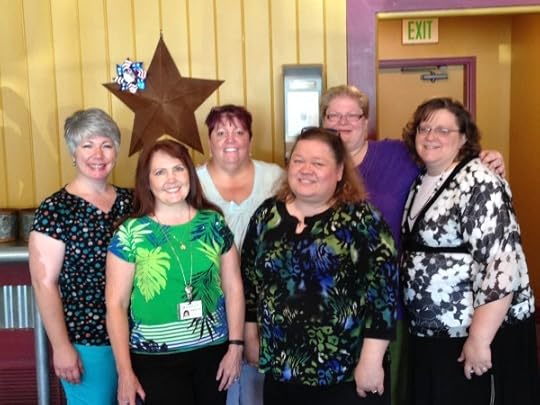
Kristin Holt, Carolyn Steele, Bella Bowen, Liza Westbrook, Kirsten Osbourne, Amelia Adams
Last Monday, I had the great fun of meeting with a bunch of Pioneer Hearts (Readers and Writers of Historical Western Romance) at Apple Spice Junction in Murray, UT. We visited, laughed, ate, talked business, and during this ‘meet & greet’ enjoyed a meeting of the like-minded. In attendance: Kristin Holt (me!), Kirsten Osbourne, Liza Westbrook, Amelia Adams, Bella Bowen, and Carolyn Steele.
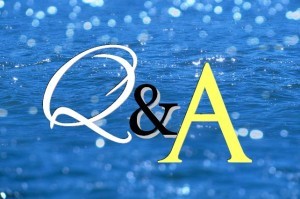
Q: Pioneer Hearts?
A: Pioneer Hearts Facebook Group: a delightful connection for READERS and AUTHORS of Historical Western Historical Romance. We talk about books we’re reading (in the genre), new releases, ideas about the American West, and so much more. It’s the best parts of a book club, calling a friend, meeting a favored author, subscribing to a service for the best news about new books, all rolled into a tidy FB group I can visit whenever the mood strikes.
Are YOU a member of the Pioneer Hearts Facebook Group? If not, consider this a personal invitation to join. Simply log in to your FB account and click “join” on the Pioneer Hearts Page.
Note: Events like the Salt Lake City luncheon happen all over the country when online friends join together for a real-life meet and greet. They’re fun! We’re holding another one in northern Utah in July sometime. For more information, check out the FB group page.
Copyright © 2015, Kristin Holt, LC
June 12, 2015
Courtship, Old West Style
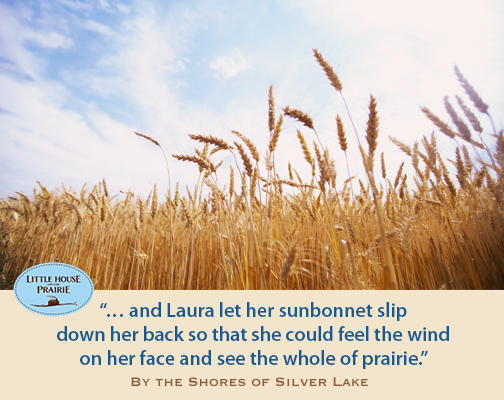
I read Little House on the Prairie (and the related books) by Laura Ingalls Wilder in my late elementary school years. I watched episodes of Little House on the Prairie on TV after school. Looking back, I believe my fascination with all things American West Frontier found its beginning in Wilder’s fictionalized autobiography.
One particular book sticks out in my mind regarding courtship: On the Banks of Plum Creek. I found myself taken with the mere idea that Charles and Caroline Ingalls (a married couple, parents of several children) chose to take time for courtship. They lived in a dugout. Life was hard and required lots of work. The scene (or closing statement to a scene) stands out in my mind nearly four decades later: Laura finished the dishes and looked after younger siblings so her parents could ‘walk out’ together. Laura noted her parents held hands and Ma stepped lightly, as if the joy in that simple moment meant the world to her.
Charles and Caroline continued to court one another (without any of this century’s “dating” expectations), throughout their marriage. At least that’s the portrayal in TV episodes and in the books. I’m inclined to believe it. As Laura grew up we witnessed her own developing romance and courtship with Almanzo Wilder.
Courtship has almost become an element of a bygone era. Here’s my argument:
Today’s Dating:
People of all ages have plenty of choices. Cities are larger, farm communities have grown closer together, and schools (for the most part) are significantly larger. The western United States has a much more significant population than it once had.
Kids today text, hang out in groups, and ask one another to school dances with a huge display of creativity.
Singles meet and mingle in traditional ways (church, social events, through friends) and contemporary methods (Internet dating sites, bars and clubs).
Dating usually doesn’t hold an intrinsic promise that both parties are interested in marriage. In today’s world, casual dating and even more casual hook-ups are the norm. The percentage of married adults has declined through the years.
Old West Courtship:
Courtship required intent. Young men often asked a young lady’s father, brother, or other male relative for permission to court her. Why? Because in those days, courtship held an inherent promise that said “we’re spending time together to see if we desire marriage”. Courtship didn’t always equal engagement, but to some, it did, and signaled to all others that the lady was spoken for.
Singles and widows/widowers often had few choices. Population was sparse. Sometimes young men had just one or two viable options within a day’s ride.
Singles met in quite limited ways: church, social events (barn raising, corn husking), school, through their parents (as families went out of their way to socialize), when single men hired out as day laborers or temporarily relocated for employment, and when none of this panned out, through drastic means such as mail order brides. After all, Charles Ingalls had an uncommon wanderlust and moved his family far more than the average man in the mid 1800’s. Most people stayed put, living the whole of their lives and never venturing further than a few miles. Manifest Destiny nudged more than a few out of that traditional mold.
Young men most often had every intention of marrying. Marriage meant a helpmeet (someone to do laundry, cook, keep house, help on the farm, tend the garden, work beside him, rear children, “safe” and readily available sex, companionship, children to help work the land and heirs to leave it to, and more). Young women usually wanted marriage, too, but for different reasons: protection, respectability, support, love, children.
The activities of courting couples in the Old West hardly resemble contemporary dating. No movies, few restaurants, no cell phones, saloons weren’t the place for upstanding women, and no one had a car and an interstate. Few had much cash money to speak of. Entertainment, in general, rarely resembled the entertainment of today. Leisure hours were few, and depending upon the season, could be non-existent.
What did Old West courting couples do?
Picture your most favored romance novels set in the historic American West. Authors, after all, have keen imaginations, (generally) a superb comprehension of the era in which they write, and craft tales where a couple meets, falls in love, and commits. What brought the couple together (and how did they court) in the book(s) you’ve read and enjoyed?
An Incomplete List of Courtship Rituals:
Visits at the woman’s home with another adult family member present. (“May I call on you?”) Think parlor conversation. Or enjoying a pleasant summer’s eve on the porch swing.
Meals taken in the woman’s home with her parents and family. (“Won’t you join us for Sunday supper?”)
‘Walking out’ together. Strict Victorian-era standards may have been more relaxed on the frontier, but young ladies still had a reputation to protect and parents will be parents, regardless of the time. Going for a walk meant the courting couple could be in the public eye (usually) and therefore could dispense with the idea of a chaperon.
Riding. Usually on their own mounts. Even in the Wild West, reasons for a woman to ride double with a man she wasn’t married to were few and far between.
Buggy ride or sleigh ride.
Dining out. Towns and cities did spring up, and most had at least one dining establishment. Men of means often did ask the object of his affections to dine out with him. Same customary acceptance as ‘walking out’–as a public place, the activity was seen as fit for an unmarried couple.
Attending social events: Founder’s Day parades, barn dances, church picnics, barn raising, etc. Consider the work this would take: a man might ride plenty far just to ask his best gal to attend some event, ride into town to reserve a rented rig, then retrace his mileage into town to rent the rig, collect the lady at her home, take her to town (or whatever homestead) for the event, then cover all those miles once again in reverse. [See a specific story related here, sixth paragraph from the end.]
Parlor games.
Reading aloud. Books were scarce but not that scarce. Young men enjoyed hearing the object of their affection read to them.
Picnics in a scenic spot.
Opening doors for her (even in her own home).
Standing whenever she entered the room.
Small but personal gifts: he might bring a bunch of wildflowers or roses trimmed from his mother’s garden. She might offer a favored suitor a lock of her hair tied with a ribbon and carrying her perfume’s fragrance. Handmade Valentine cards. A handkerchief she embroidered especially for him.
Sitting in church together.
Holding hands (for the engaged, seriously courting, fully committed).
Combining work with courtship. If a suitor had little daylight to burn courting, he’d do his best to attend to his lady while accomplishing necessary tasks… and no doubt proving his worth as a provider and mettle as a hard worker. Picture the time spent visiting while driving miles into town for a stop at the mercantile (“Allow me to lift that heavy purchase for you.”), collecting a farm implement repaired by the town blacksmith, and enjoying the extra benefit of competitors seeing him at her side. The idea of combining work with courtship isn’t limited to away-from-home outings. It’s easy to believe a young man would be eager to spend time at his lady’s home, working alongside her father and brothers, not only coming to know them, but proving his worth to her family members.
Kissing, often called “sparking” back in the day. [Note that sparking also simply meant “to engage in courtship”.] Again, the American West was much less fussy about social conduct and limitations than were east coast cities and the southern genteel.
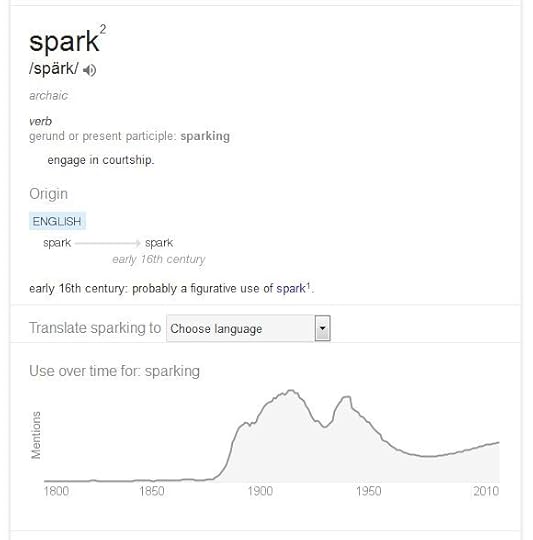
I remember the TV episode scene when grown-up Laura’s beau, Manny (Almanzo Wilder) said (essentially, I’m paraphrasing) “Careful! That’s not glass in that ring.” Laura had pulled off his engagement ring in a fit of temper. Yes, true to the Old West life. Engagement and/or wedding rings weren’t uncommon–when they were to be had and money (or barter) was available. Rings often didn’t have a diamond centerpiece and were made of silver or gold (think of the possibilities when the groom owned a silver or gold mine). It wasn’t uncommon for family heirlooms to be passed down, and for a man to present his intended with a ring his mother or grandmother had worn.
Sigh. Courtship is rather romantic, don’t you think?
What are your favorite elements of historic American West Courtship? What ideas do you have that I failed to mention? Please respond and share your thoughts!
June 9, 2015
The Ins and Outs of Naming Characters
Q: How do you name your characters?
Part of the joy (and challenge) of writing historical fiction is finding the right name for characters. After all, mothers who delivered a bouncing baby boy in 1865 weren’t likely to name him Liam, Noah, Mason, Ethan, Logan…. oh, wait a minute. Maybe they would have.
These are the
It hasn’t always been this way. While working as a Labor and Delivery nurse in the late 80’s and early 90’s, I often asked new parents what name they’d chosen… and I’d often hear the same name over and over and over again. Then, baby names were fiercely era-specific. Think about the usage of Brittany (Britney, Brittani), Colt/Colton, and Kylie in the current 20 to 25 age group.
I guess parents like to be trendy. They also like to name babies after ancestors (if they like the name). Human nature changed all that much since the late nineteenth century.
My most-used resource for naming historic characters are census records. Why? Not only will they provide an accurate, true-to-life listing of names actual parents gave their offspring in the year my character would have been born (because census records provide the ages as well as names and location of legitimate individuals), but they let me know the wide range of surnames actually found in my setting of choice.
I found it hard to come to agreement with my husband on names for our children (thank goodness they were born to us one at a time)… and it’s often just as difficult to name a character.

Historically accurate or not, I can’t select just any name.
Unless I intend for a real life individual (famous, probably) to make an appearance in my fiction, it makes sense to not take a matching first name and last name… I do my best to make sure someone with my chosen hero’s name didn’t actually live then.
Some names are a turn-off to contemporary readers… even though historical names are making a comeback. Really, who wants to read about (or fall for a new a book boyfriend) named Cletis or Horace?
The name I choose should match my hero’s/heroine’s personality… just as so many parents wait to actually see what their baby looks like to decide between names.
As a reader, I find it easier to keep track of different characters if their names begin with a variety of letters and/or sounds… and they don’t all begin with an M (Michael, Mammy, Mary) or a K-sound (Christopher, Katherine, Queenie). As an author, I track the use of first letters and beginning sounds to minimize (if not eradicate) duplication.
Just as stock images for cover art eventually become overused, so do character names. I don’t pay a great deal of attention to this, but if I’ve read about one too many Molly or Sarah or Elizabeth novels of late, I tend to avoid the overused and find something far less common. That’s how my heroine in Gideon’s Secondhand Bride ended up with the historically accurate (and uncommon) name of Permilia. This gal liked the diminutive Millie, which is common in my genre… but also true to the era.
Once I’ve used a name in a book, I really shouldn’t use it again. This applies for more than just main characters. Why confuse readers into thinking a secondary character in one book has become a secondary or main character in another? I’ve already slipped up twice, and have name duplications. (**See my closing paragraph for a contest!**)
Sometimes, I have a little bit of help in naming characters. Some fans thoroughly enjoy winning the privilege of naming a character. Winners of such drawings might select their own name, a name they particularly like, or a granddaughter’s name. Coming up, two of my heroines are named after a reader’s real-life granddaughters. I’m looking forward to the pleasure of writing the most sympathetic, appealing characters possible, in order to please this reader who loaned me the names of two young ladies she loves dearly.
I hope I’m up to the task. I can imagine how I’d feel to read about a fictitious character who had the same name as me, and how I’d respond if that character fell short of my expectations.
CONTEST:
Do you know which two character names I’ve slipped up and duplicated from one book to another (that wasn’t intentional, wasn’t referencing the same fictional person in the same series)?
REPLY to this post with your answer of two character names.
The FIRST response that correctly names my two duplications will win one autographed paperback (mailed anywhere in the world) OR one Kindle edition book–winner’s choice of titles in my book list.
This contest remains OPEN until I post the winner’s name and verify the correct answer…. so scroll down and read the replies!
Copyright © 2015, Kristin Holt, LC.
June 6, 2015
Series Vs. Serials

Copyright Dana Rothstein, Dreamstime Stock Photos
Series Vs. Serials
A Series, in fiction, can be (among other definitions) a set of loosely related books connected by a cast of characters (such as a family [brothers] or a group [SEAL Team]), a location [city], an event [the apocalypse], or other element that tie the stories together. Often these books can be read in any order and the reader still has the ability to understand the premise, hasn’t missed much, and when other books are read, it simply adds to what they’ve already learned about the setting and characters. For example, secondary characters in the book you might read first are already married, but in a previous book in the series, they were the main characters and we enjoyed watching their romance blossom and grow toward impending marriage.
By this definition The Bride Lottery is the first book in a new series: Prosperity’s Mail Order Brides.
This series, like my others, will contain loosely connected books that may be read and enjoyed in any order. Each book is a complete romance— and as a romance has a happily-ever-after. While the lives of the characters naturally progress— they age, have more children, add on to the house, experience more life—the book has a tidy and intentional finish. A reader could enjoy a single title and not miss out on anything; reading enjoyment is typically maximized by picking up multiple books within the series. The loose connections sweeten the experience. It’s almost like a visit with old friends to see familiar characters either before or after their starring role.
Serials are quite different. Episodic in nature, serials can be viewed much like episodes in a favorite TV show. Multiple episodes (each a serial) make up a season (the whole book). Sometimes TV shows run for many seasons.
If a reader were to pick up a book in the middle of a series, they’ll have missed out on important information. While they may have a cliffhanger of an ending and some questions may have been resolved throughout, the story is far from complete.
Because the current generation loyally follows favorite shows on TV, it’s not surprising fiction has adopted the model. If a reader wants to read quick bites (under 2 hours of reading time), thrives on a power ending (often a cliffhanger), and pick up again with the next serial in a week or two, more power to them.
Some types of fiction lend themselves very well to the serial format. Others do not.
Personally, I dislike this format in the romance genre, and I promise— my series are not serials.
Please tell me…what is your preference–Series or Serials?
Copyright © 2015 by Kristin Holt, LC.
June 3, 2015
Top Five Ways to Tell Similarly (or Identically) Named Authors Apart
 Top Five Ways
Top Five Ways
to Tell Similarly (or identically) Named Authors Apart
A reader contacted me not long ago, commenting on a book she believed I’d written. She’d purchased the book solely because it had my name on the cover, and read it, fully expecting to enjoy it as much as my others. This reader had been quite surprised (and not in a good way). She figured I’d branched out or maybe it was a book I’d written long ago before settling on mail order bride historical romances. After all, lots of fiction writers publish books in more than one genre and often with significant differences in sensuality level, language, and violence.
The author’s name was so similar to mine, my fan didn’t note one minor difference.
The other author’s name has one letter different than mine. And yes, I’ve personally experienced identical names used by two (and three) authors.
Have you had a similar experience?
Top Five Ways to Tell Similarly (or Identically) Named Authors Apart:
1. Check the known author’s website. Most authors keep their website up to date… with announcements, cover reveals, and lists of titles. When in doubt, check the source.
2. Look for “branding”. You know Nike is Nike because of the trademarked swoosh, but even more importantly, their shoe box color(s), the shape of their brand’s name (when printed on shoe box), etc.
My brand grows stronger with every book I publish. Take a look at my book covers, and note the strong similarities between each book within a series. They match. They’re obviously related stories. The same fonts grace each cover (in the series). My “name plate” uses the same font for my name and also (in more recent releases) the same shape (stacked Kristin above Holt).
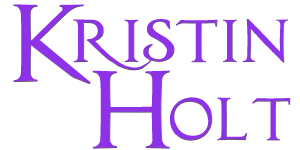
Tip: The visual branding clue (font selection, author name plate) doesn’t work with titles published by someone else, such as the Triple Treat Romance that includes one of my titles.
3. Branding is more than font choice or name plate. All my books are sweet western historical romances (only two-thirds of which are mail order bride romances). They’re all sweet (wholesome), all western historical romances. If I ever deviate from that “norm”, I’ll make sure my readers know. If a murder mystery seems like it’s mine, exercise caution.
4. Online Retailers have a built-in system. Amazon.com shows an author’s name beneath each digital book title. Click on that name and the link takes you to the author’s list of books. You’ll see all books available on Amazon from that author. The mega-retailer calls these pages “Amazon’s (insert author’s name here) page”. For example, see Amazon’s Kristin Holt page.
Tip: This system on Amazon only works with authors’ names. Note that series names, if a duplication of another author, will all link to the same page, regardless of author name. It does work well with unique series names.
Not all retailers are the same. On BN.com, hover the cursor over an author’s name and it turns blue (a link to another page within BN.com). This leads to a page where only that authors’ books are listed (but it looks like every other search result–see this example). Why? Each author has a different account when uploading books.
5. Use the “Look Inside” feature (a.k.a.“Read Instantly” on BN). Click on the cover image of any Kindle edition book (on it’s own sales page) [or Nook edition book], to open the first small percentage of the book’s interior pages. Scroll down. Read the details about who published it. More importantly read the opening scene or two. Chances are you’ll recognize your favorite author’s voice and style. If the book under scrutiny is quite different than you’re used to, scan for word usage. (One reason my reader contacted me was her “surprise at the f-bomb”–as none of my books contain foul language.) This might prove an insightful clue regarding authorship.
Have you confused two or more authors? What methods you use to discern one author from another? Reply and let me know.
Thank you! Please share this post with others.
Copyright © 2015, Kristin Holt, LC
June 1, 2015
SUMMER IN SNOW VALLEY: 6 Sweet Romances for just $0.99 (until June 6th)
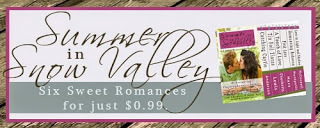
#1 Bestselling Authors of Christmas in Snow Valley, have teamed up again with six wonderful summer novellas that are sure to make your summer sweet and sassy!
***Only $.99 until June 6th***
Amazon * B&N * iTunes * Kobo * Smashwords
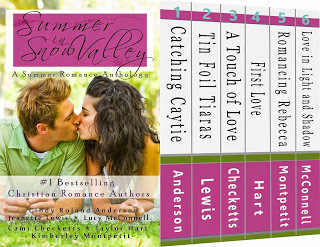
Catching Caytie by Amazon Top Seller Cindy Roland Anderson
On the night Caytie Holbrook intends to break up with her cheating boyfriend, he blindsides her by announcing their engagement at a dinner party. When Caytie discovers her father is in on the scheme, she runs away from her home in Beverly Hills to hide out at her uncle’s ranch in Snow Valley, Montana. While Snow Valley is a beautiful place, Caytie only plans to stay until her twenty-fifth birthday when she’ll inherit a trust fund her grandmother left her, allowing her to pursue her dream to move to Italy. That is until she meets Jace McAllister, an incredibly sexy—although somewhat grumpy—cowboy who threatens to disrupt her plans.
Tin Foil Tiaras by Amazon Top Seller Jeanette Lewis
Cameron Elliott has come to Snow Valley to coach Annalisa Drake in the Miss Snow Valley pageant, and prove to her demanding boss that she deserves a place at the prestigious Westbrooke Agency. But Annalisa’s handsome and protective big brother, Kyle, is determined to keep his sister from becoming a reluctant beauty queen. As Cameron tries to win Kyle over, Kyle insists some things are more valuable than a title and as crazy as it sounds, Cameron might just believe him.
A Touch of Love by Amazon Top Seller Cami Checketts
Annie Stirland has endured a lifetime of teasing, embarrassment, and isolation due to her speech impediment. When irresistible cowboy, Luke Wilson, seems to be falling for her, she’s certain he’s too good to be true. A tragedy involving his ex-girlfriend proves she’s right. What man can resist sheltering someone they once loved? Annie knows she should walk away, but Luke isn’t ready to give her up.
First Love by Amazon Top Seller Taylor Hart
Janet Snow doesn’t expect to get caught in a full-blown make out session at her brother’s wedding. Especially not with Michael Hamilton, the boy she’d written off ten years ago. Even though they both agree to no complications, Janet’s not sure they can stick to it given their past. After a trip to the hot springs, a helicopter ride, and a proposal, even the most cautious single mother would start to wonder if true love really is just about the timing. Now Janet has to make a choice—play it safe or trust that her first love could also be her last.
Romancing Rebecca by Amazon Top Seller, Kimberley Montpetit
Rebecca Dash loved spending her teen summers swooning over Jane Austen and helping her aunt at the Starry Skies Bed & Breakfast in Snow Valley. But as a recent college grad, she’d rather write sappy romance novels than go out with guys that make her a nervous wreck. When a team of fire-fighters set up camp on the lawns of the B&B and Captain Wade catches her eye, Becca soon learns that there’s more to a happily-ever-after than a flirty fireman with muscles the size of the Montana hills.
Love in Light and Shadow by Amazon Top Seller Lucy McConnell
Mercedes O’Shay has sworn off gorgeous men because they have a tendency to break her heart. When she meets her new neighbor, Chet Bauer, she immediately puts him in the Do Not Date category based on his well-defined muscles and stunning blue eyes. But the more Mercedes learns about the cowboy who reads classics and forges iron, the more she realizes the heart doesn’t see in black and white; it sees light and shadows.
***
Excerpt from A Touch of Love
“Do you ever write down what you’re thinking?” Luke asked.Annie’s eyebrows arched. He loved the way she did that.“Would you write for me? What you’re thinking?”She shrugged her shapely shoulders and studied him for a few seconds before pulling out a notepad. She wrote for a few seconds then handed it to him.I’m thinking that this cowboy is a nice guy who’s uncomfortable with my silence.
“I guess you got me there. I don’t really talk too much, usually just swear at the cattle. So I’m not a nice guy at all.”
She took the pad back, wrote, and handed it to him again.
You’re definitely a nice guy. I knew that when you bought the thoughtful gift for your sister. Why do you want to take me to dinner? Feeling bad for the new girl in town?
He grinned. “Nope. Feeling intrigued by the new girl in town and wanting to get to know her better.” He handed the pad back to her.
You don’t have the time to get to know me better, it would take hours for me to get anything out with my stutter.
He laughed. “Sweetheart, I’ve got the time and the desire to get to know you better. I really do love the sound of your voice, but if you’re more comfortable we could communicate like this.”
Her grin widened. How about we give it a few days? I don’t go to dinner with men I don’t know.
“How about I come back tomorrow and see you so you don’t have to go to dinner with a man you don’t know?” He paused. “Dang. Tomorrow we’re checking the range cows. Friday?”
She looked dubious.
“I’d like an appointment Friday at five for…” He looked over the list of options. “A foot zone. If you’re available, I’d like to take you to dinner after.”
She wrote quickly. Reading your feet will definitely help me get to know you. Are you sure you’re ready for that kind of disclosure?
A surprised laugh escaped him. “You can tell stuff about me from rubbing my feet?”
She pointed at the word reading.
“Reading my feet?”
She nodded, looking very smug.
“Okay. I have nothing to hide. You’re sure we can’t go to dinner tonight?”
She waved at him.
Luke inclined his head. Annie was a challenge. He liked her more each minute.
***
May 31, 2015
Book Review: Hearts West: True Stories of Mail-Order Brides on the Frontier, by Chris Enss
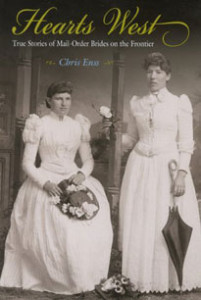
Hearts West: True Stories of Mail-Order Brides on the Frontier
Book Review:
Hearts West: True Stories of Mail-Order Brides on the Frontier
by Chris Enss
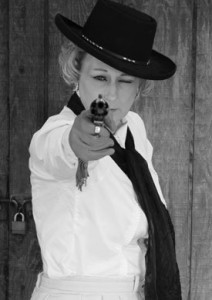
Chris Enss
Fans of Western Historical Romance, particularly Mail Order Bride-themed romances will find this nonfiction volume by Chris Enss an enlightening and entertaining read.
I purchased and read Hearts West: True Stories of Mail-Order Brides on the Frontier in paperback, specifically for research for my fiction writing. I read the book expecting a lesson in history and this book definitely delivered (including a bibliography citing sources). I quickly found myself immersed in the nonfiction accounts of women who left hearth and home and traveled great distances to marry a man they’d fallen in love with through letters… or simply banked on as a good prospect.
Enss organized this roughly 100-page volume into chapters containing seventeen individual historical accounts spanning the Victorian Era. Each chapter shares the tales through journal entries, newspaper advertisements, photographs, firsthand accounts, segments of letters, and stylistic cartoons (advertisements) supporting the material. Enss writes in a conversational tone that makes for easy, informative reading. It’s far less about historical facts than about the living, breathing reality of men and women seeking matrimony through less-traditional means.
I enjoyed the diversity of each couple’s story. Some knew one another well, and had courted prior to a separation wherein they continued associating by letters prior to reuniting on the frontier. Others simply answered advertisements with a brief letter, whereupon the couple agreed to marry. Others enjoyed a lengthy courtship through letters. Some involved family members assisting with the selection of a bride. Some matches ended in significant disaster while others yielded lasting contentment and happiness.
I wholeheartedly recommend this nonfiction title to fans of Mail Order Bride romantic fiction. This book sets the historical stage through all seventeen vignettes, paints vivid pictures of circumstances in the 19th century (and early 20th), and enhances the enjoyment of Mail Order Bride Romances.
The 116 page paperback edition, published by Globe Perquot Press, is currently $10.24 on Amazon and the Kindle edition is $9.59. It’s also available from Barnes & Noble.
Copyright © 2015, Kristin Holt, LC
May 29, 2015
#WhyIWriteHistoricals
#WhyIWriteHistoricals
Today’s post is my contribution to the world-wide movement from Historical Romance Network to share why authors and readers choose historical romance. Today, Friday, May 29th, Authors will post and tweet and share their own reasons why Historical Romance matters to them.
Q: Why do I write Historical Romance?
A: Top 10 Reasons #WhyIWriteHistoricals
I’m fascinated by days gone by.
I enjoy the research about true historical events and the people who lived them.
I’m curious about the development of the society/culture I live in… when inventions came about, new words added (etymology) to American English, and more.
People (we’ll call it human nature) are the same no matter what era they lived in.
Historical times were often simpler, yet the conflicts people faced way back then can be different than in contemporary times. Consider the challenge of knowing where someone is, then vs. now. Without passports, the Internet, credit card usage, investigators used different methods (and a whole lot more “elbow grease”).
I’m genuinely interested in the lost arts of sewing, mending, home canning (bottling) and other food preservation techniques, tatting, looming, (vegetable) gardening, cooking, butter churning, cheese making, and more.
The Victorian era lends itself to sweet (wholesome) romance because of societal expectations of modesty and morality. True, I can choose to write sweet romance in any place, in any time, and many authors do, but Western Historical Romance is my personal favorite.
Courtship rituals of the late 19th century seem beautifully romantic to me (and often quite different from the contemporary).
Writing, for me, is an unequaled creative outlet.
I have the opportunity to explore the depth of human emotion, dig into motivations until I hit bedrock, and live vicariously in the settings and time periods I most adore.
#WhyIReadHistoricals
Today, May 29th, 2015, is also the day readers of Historical Romance will share why they love the genre, what draws them into historical settings of all kinds, and why they love Historical Romance! Look for #WhyIReadHistoricals on social media. Please consider joining the movement! Tweet, share, post, and answer the question of the day: Why do YOU read Historical Romance?
Q: Why do I read Historical Romance?
A: Top 10 reasons #WhyIReadHistoricals
I enjoy visiting locales, time periods, and events I’ll never otherwise experience.
I’m fascinated by the Old West… and to a lesser degree: Regency England, Medieval Europe, etc.
The Old West is a compelling setting for believable romances.
The Old West is a perfect backdrop to showcase larger-than-life villains and wherein strong heroines and heroes prove their mettle.
While I read a wide variety of fiction (and non-fiction), I most enjoy Romances because of the promised optimistic (if not happy) ending. Life can be a downer… and I enjoy reading for escapism and entertainment.
If I’m going to “hide in fiction” (a.k.a. escapism and entertainment), there’s nowhere I’d rather be than in the Old West, immersed in a captivating romance.
I’ve read so many Western Historical Romance “keepers“, I’m constantly drawn back to this niche, looking for my next favorite read.
Men: cowboys, lawmen, businessmen, ranchers, hired guns… no matter what “hat” they wore, the men of yesteryear were a cut above!
A well-crafted Historical Romance novel/novella/short story enriches my comprehension of history… a bonus!
Exposure to other times and places deepens my comprehension of social issues, crises, gender inequality, and disasters of the past. My appreciation for my life and place in the world increases.
Remember, TODAY, May 29th, 2015, #WhyIReadHistoricals…
Please respond to this post. I’m genuinely interested: #WhyIWriteHistoricals and #WhyIReadHistoricals
Kristin Holt's Blog
- Kristin Holt's profile
- 117 followers



